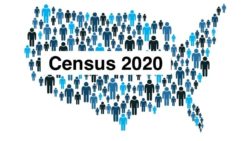 The federal government is finding it more difficult than usual to get people to complete the 2020 Census. The headline on Politico Magazine’s recent article about the once-every-decade constitutional exercise — “A Brush with Catastrophe: Inside the 2020 Census Meltdown” — suggests the scale of the problem.
The federal government is finding it more difficult than usual to get people to complete the 2020 Census. The headline on Politico Magazine’s recent article about the once-every-decade constitutional exercise — “A Brush with Catastrophe: Inside the 2020 Census Meltdown” — suggests the scale of the problem.
The meltdown is due, in part, to the pandemic and the Trump Administration’s aggressive maneuvers to obstruct the count. But another significant driver has been the Census Bureau’s incomprehensible decision to force most Americans to respond to the survey via the internet.
FCC proposes eliminating newspaper notices … again
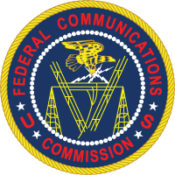 Twenty-three months after it initially issued a Notice of Proposed Rulemaking (NPRM) recommending the elimination of newspaper notice for broadcast license applications, FCC last week issued a Further Notice of Proposed Rulemaking (FNPRM) reiterating its original recommendation and offering additional details about how it proposes to revise broadcasters’ public notice obligations.
Twenty-three months after it initially issued a Notice of Proposed Rulemaking (NPRM) recommending the elimination of newspaper notice for broadcast license applications, FCC last week issued a Further Notice of Proposed Rulemaking (FNPRM) reiterating its original recommendation and offering additional details about how it proposes to revise broadcasters’ public notice obligations.
PNRC filed comments in 2017 opposing the recommendation in the original NPRM and 35 press associations signed onto the comments. PNRC and the National Newspaper Association also met with FCC staff last fall to oppose the changes.
A few observations about the FCC’s new proposal:
PNRC, NNA Meet With Federal Agency to Discuss Proposal
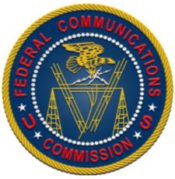 PNRC Executive Director Richard Karpel met last month with Federal Communications Commission (FCC) officials to urge the agency to abandon its proposal to eliminate rules requiring broadcasters to publish notices in local newspapers when they file license applications with the Commission. National Newspaper Association (NNA) general counsel Tonda Rush joined him at the meeting.
PNRC Executive Director Richard Karpel met last month with Federal Communications Commission (FCC) officials to urge the agency to abandon its proposal to eliminate rules requiring broadcasters to publish notices in local newspapers when they file license applications with the Commission. National Newspaper Association (NNA) general counsel Tonda Rush joined him at the meeting.
The FCC proposal, which was filed in October 2017, is open-ended. Potential outcomes range from elimination of all public notice requirements — the preference of the broadcasters’ association — to maintenance of the existing rules. However, dismissive comments expressed by FCC Chairman Ajit Pai and a fellow commissioner don’t bode well for their prospects.
Broadcasters Ask FCC to Move Notices to Their Websites
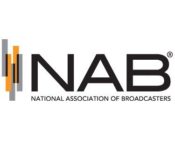 Late last year, the Federal Communications Commission (FCC) issued a proposal that would, among other things, eliminate its current rules requiring broadcasters to publish notices in local newspapers when they file various license applications. PNRC filed comments opposing the change.
Late last year, the Federal Communications Commission (FCC) issued a proposal that would, among other things, eliminate its current rules requiring broadcasters to publish notices in local newspapers when they file various license applications. PNRC filed comments opposing the change.
More than nine months later, the agency still hasn’t issued a final ruling on its proposal.
But the National Association of Broadcasters (NAB) isn’t content to wait. In August, the Washington, D.C.-based trade association filed an ex parte notice suggesting an alternative: If the FCC decides not to kill all public notice when its members file license applications — which is NAB’s preference — then the agency should replace newspaper notice with a rule permitting “broadcasters to make brief on-air announcements that refer audiences to websites with additional information.”
U.S. Senator: “Paper is not antiquated. It’s reliable.”
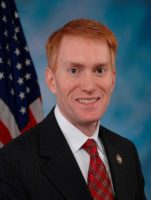 As policymakers have long understood, one of the key elements of a valid public notice is archivability. Notices must be capable of being permanently stored in their original, unaltered form to serve as historical records for the judicial system, scholars and historians. Newspapers do a good job at that. Websites do not.
As policymakers have long understood, one of the key elements of a valid public notice is archivability. Notices must be capable of being permanently stored in their original, unaltered form to serve as historical records for the judicial system, scholars and historians. Newspapers do a good job at that. Websites do not.
Late last year, Sen. James Lankford, R-Okla., introduced a bill that reminds us of the important role historical records still play in sustaining our democracy. Sen. Lankford’s Secure Elections Act, which is designed to harden U.S. defenses against interference in federal elections, was co-sponsored by senators from both parties spanning the ideological spectrum; it appears to have widespread support within the upper chamber.
PNRC Criticizes FCC Commissioners for Smug Dismissiveness
 In comments filed last month with the Federal Communication Commission, the Public Notice Resource Center criticized Commissioners who mocked opposition to a recent proposal that would eliminate FCC rules requiring broadcasters to publish a notice in a local newspaper when they file certain license applications with the Commission.
In comments filed last month with the Federal Communication Commission, the Public Notice Resource Center criticized Commissioners who mocked opposition to a recent proposal that would eliminate FCC rules requiring broadcasters to publish a notice in a local newspaper when they file certain license applications with the Commission.
“We were struck by the dismissive tone adopted in the statements of (some of the Commissioners) respecting the notion that local newspapers might still serve as the most effective means to deliver notice to the public,” said PNRC in its comments. “How did we reach a point where their consideration of the issue of public notice is so facile they ridicule a longstanding practice without bothering to provide any evidence that the alternative they’re promoting would be an improvement?”
Federal Agency Eliminates Newspaper Notice for Health Provider Infractions
 The winning entry in PNRC’s 2016 Public Notice Journalism contest was Ken Little’s story in the Greeneville (Tenn.) Sun about the Centers for Medicare & Medicaid Services (CMS) decision to terminate its provider agreement with the John M. Reed Health & Rehabilitation facility in Limestone.
The winning entry in PNRC’s 2016 Public Notice Journalism contest was Ken Little’s story in the Greeneville (Tenn.) Sun about the Centers for Medicare & Medicaid Services (CMS) decision to terminate its provider agreement with the John M. Reed Health & Rehabilitation facility in Limestone.
In this year’s contest, third place went to a similar story — Victor Parkin’s coverage in The Mirror-Exchange of CMS’s closure of Milan Health Care and the $2 million in fines subsequently levied against the Gibson County nursing home by the federal government and the state of Tennessee.
Researchers Rush to Preserve Data on Government Websites
For over 200 years, public notices have been published in newspapers in part as a consequence of the inviolability of newsprint. Legislators have always understood that when they passed laws requiring notice of official actions to be published in newspapers, a record of the notice would be easy to authenticate and would remain in newspaper archives in perpetuity.
A recent conference of independent researchers provides an excellent reminder that government websites fail miserably at meeting that traditional public-notice standard.
EPA Eliminates Mandatory Newspaper Notice for Clean Air Act Permits
 The Environmental Protection Agency (EPA) recently announced it was eliminating the mandatory requirement to provide newspaper notice of permitting and implementation actions under the Clean Air Act (CAA). The rule, which will take effect 30 days after it is published in the Federal Register, requires notification on EPA’s new “National Public Notices Website” and allows other agencies that implement EPA-approved CAA programs to publish notices on their websites as well.
The Environmental Protection Agency (EPA) recently announced it was eliminating the mandatory requirement to provide newspaper notice of permitting and implementation actions under the Clean Air Act (CAA). The rule, which will take effect 30 days after it is published in the Federal Register, requires notification on EPA’s new “National Public Notices Website” and allows other agencies that implement EPA-approved CAA programs to publish notices on their websites as well.
The rule doesn’t prevent permitting authorities from supplementing notice on their own websites with newspaper notice. In addition, it doesn’t override state laws requiring state and local environmental agencies to use newspapers to notify the public about EPA-approved permitting actions under the CAA. In those states, new laws would have to be passed to eliminate the newspaper-notice requirement.
PNRC Files Comments Opposing EPA Proposal
The Public Notice Resource Center today filed comments urging the Environmental Protection Agency (EPA) not to deprive the public of newspaper notices relating to the approval of permits under the Clean Air Act (CAA). EPA is considering notifying the public about CAA permits only on a government website.
PNRC was joined in the comments by the 43 other organizations representing newspapers and journalists.
On Dec. 29, EPA announced its intention to reduce the public notice it currently provides in connection with most CAA actions by eliminating the requirement that the notices run in local newspapers near the potential sources of pollution EPA is planning to approve.
